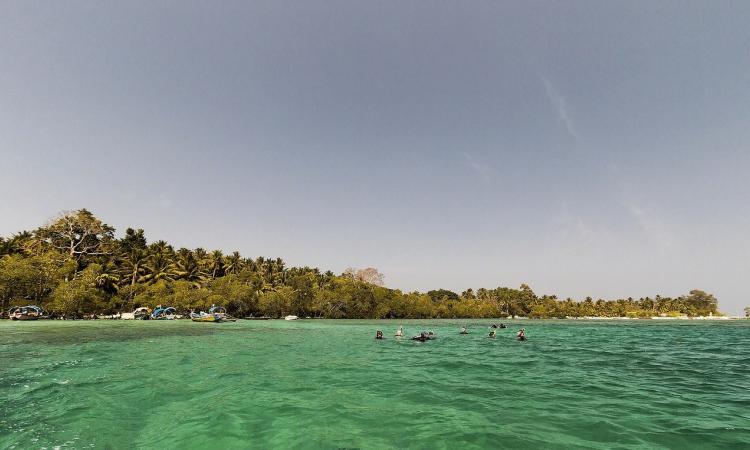
CERD seeks government response on impacts of development projects in Andaman
As the Central government has been pushing ahead with the two mega development projects-- the Holistic Development of Great Nicobar Island, and the Sustainable Development of Little Andaman Island Vision Document—in the eco-sensitive Andaman and Nicobar islands, the issue has now reached the top United Nations (UN) body, the Committee on the Elimination of Racial Discrimination (CERD).
The projects which are being opposed by the environmentalists, will have a direct impact on the five tribal groups notified as Particularly Vulnerable Tribal Groups (PVTGs).
The CERD has now sought responses from the Government of India about the measures adopted to prevent adverse and irreparable impact of these projects on the PVTGs, the impact on the ecosystem, on biodiversity, and on the livelihood and existence of these tribes. (Frontline)
UNDP and the Environment Ministry to work together to protect mangroves
As part of an initiative to enhance the climate resilience of coastal communities in India, the United Nations Development Programme (UNDP) has joined hands with the Ministry of Environment, Forest and Climate Change (MoEFCC), the Green Climate Fund (GCF) and the respective state governments to protect mangrove ecosystems in Odisha, Maharashtra and Andhra Pradesh.
A project, with an aim to minimize the adverse impact of cyclones and storm surge, has already been initiated for the mangrove restoration in the Bhitarkanika and Mahanadi landscape areas in Odisha. The project envisages mangrove plantation on more than 1,000 hectares of coastal belt in the state in the next three years. (The Times of India)
CAG finds loopholes in Odisha forest department’s tree plantation drive
According to the performance audit by the Comptroller and Auditor General of India (CAG), Odisha forest department’s tree plantation activities did not result in an improvement of degraded forest area or forest cover to its full potential. CAG has found that the maximum number of trees were planted along roads while the degraded patches inside the forest area which were inaccessible, were not taken for plantation activity.
This has occurred as there was a lack of coordination with the district administration, which led to non-availability of information on degraded forest land and non-forest land with the department.
CAG further reported that the planning procedure was limited to only instant data provided by field staff and concluded that the forest department fell short of its targets. (Hindustan Times)
List of Indian wetlands getting Ramsar tag grows to 54
Five new wetlands have been declared Ramsar sites in India, bringing the total number to 54.
The new Ramsar sites are Karikili Bird Sanctuary, Pallikaranai Marsh Reserve Forest and Pichavaram Mangrove in Tamil Nadu; Pala wetland in Mizoram; and Sakhya Sagar in Madhya Pradesh.
Five sites are among the two dozen that have been pushed for Ramsar status in India, and once accepted this year, the number of Ramsar sites in India will reach 75. As a result of the designation, encroachments, industrial expansions, solid waste dumping, and other developments will be prohibited within these wetlands. (The Times of India)
This is a roundup of important news published from July 17 – August 2, 2022. Also read policy matters this fortnight.
/articles/andaman-mega-projects-cerd-seeks-government-response-tribal-concerns